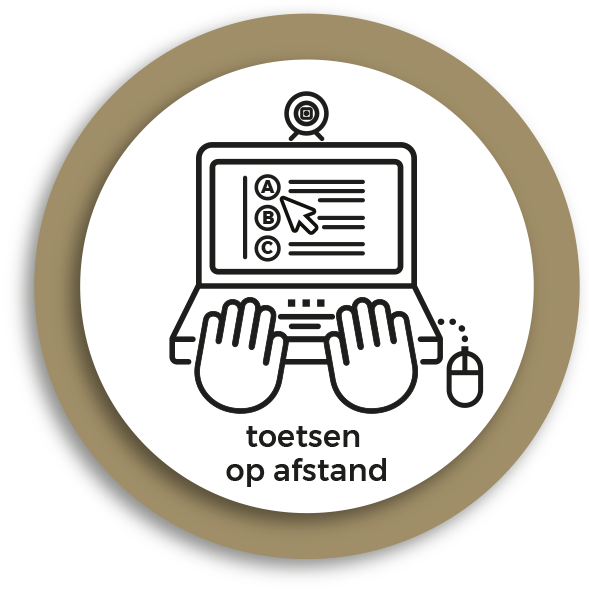Various steps are involved, depending on whether formative or summative assessment is used. Furthermore, the number of questions in an exam that cannot be marked automatically will depend on the number of students and the time …
Various steps are involved, depending on whether formative or summative assessment is used. Furthermore, the number of questions in an exam that cannot be marked automatically will depend on the number of students and the time available for marking.
Prior to assessment
Choice of assessment method: preferably the same as for summative assessment, so that students can familiarise themselves with the selected method.
Design of exam questions or educational resources: we advise doing this well before the course starts.
The design of formative exams, and in particular of practice exams as a learning resource, can be very time-consuming. However, student assistants can help with this. Please also see interview, in Dutch, in which this is discussed.
During assessment
Formative assessment does not have to take place at a specific time. Assignments can also be made available for a week, or to prepare for a lecture or seminar.
After assessment
To maximise the learning outcome, students should be able to access their answers and the model answers after they have completed the formative assessment.
Insight into the student’s answers can also help the lecturer to see where difficulties still exist. Such insights can then be used to make adjustments to the teaching during the course.
Points to note
The results obtained in a formative exam can influence the effort that students put into their studies. This is particularly the case in a large student group.
If the formative exam counts toward the final grade, this can have a negative impact. It may therefore be worth considering a different reward system, such as a straf staffel.
In one course unit in which the learning material was assessed later on in the course, we converted a summative multiple choice test into a formative assessment, to be completed by students in groups of three. The resulting discussion had such a big learning outcome that no proctoring was required.
Summative
Since providing a practice exam with proctoring, we have had far fewer technical issues with real online exams.
Prior to assessment
Design your assessment questions, preferably in a personal or shared item bank so that you can reuse the questions later.
Depending on the exam procedure at your educational institution, some tasks such as planning an exam date, adding students to the exam group and informing students of the exam will be done for you.
Make sure to communicate clearly to the students how the online proctoring system works. Not all students have a suitable work space at home or the required equipment. Tell the students what you expect in plenty of time, as well as what they need, how they can request support from the university (e.g. loan equipment) and how they can practice prior to the exam.
During assessment
Depending on the chosen proctoring method, you are either virtually present in the conferencing software, are watching live or are on standby.
After assessment
The processing of the proctoring results depends not just on the chosen proctoring method, but also on the agreements made at your educational institution. You should therefore familiarise yourself with your institution’s policy and procedure.
If use is made of ‘recorded proctoring’ or ‘automated proctoring’, the recordings will need to be analysed. Any cases of suspected cheating will then be forwarded to the examiner or the board of examiners for assessment.
Further processing of the results is then carried out in the same way as the processing of all other digital assessments at the institution.
Points to note
Not all students are able to complete exams at home, especially if online proctoring is required. You should therefore alert the students to other locations where they may take the exam, or to opportunities for support (such as the loan of a laptop and/or webcam).
If proctoring is to be used, let the students take a practice exam so that they can practice using the system. This is also important for students with a visual or hearing impairment who use speech recognition or text-to-speech software.
For students who object to the use of online proctoring, many educational institutions provide the possibility to take the exam on-campus.
The national clinical perfusionist course uses automated proctoring for online assessment. This means that students no longer need to travel from Groningen or Maastricht to Leiden to take an exam.

